#living history
Text

A comment from @northernmariette on the clothing conference at Fort Meigs.
It was nice to be back at Fort Meigs, but I am tall and shy and sat in the back of the room during the fashion show, taking a few bad pics because of the obstructed view.
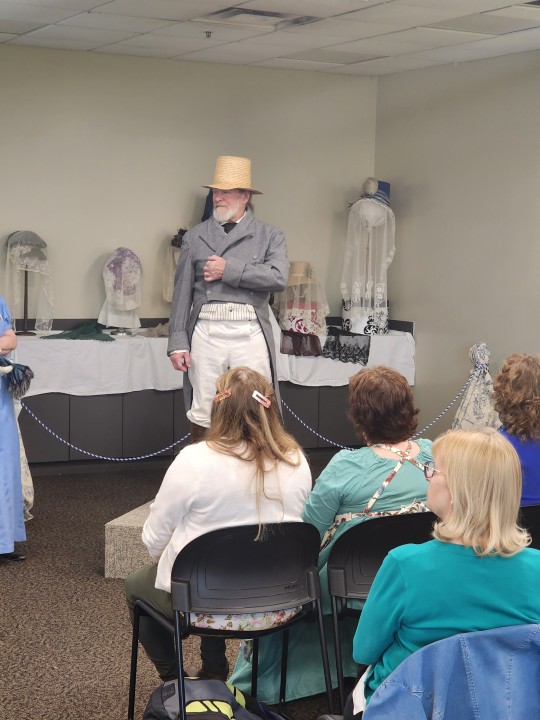

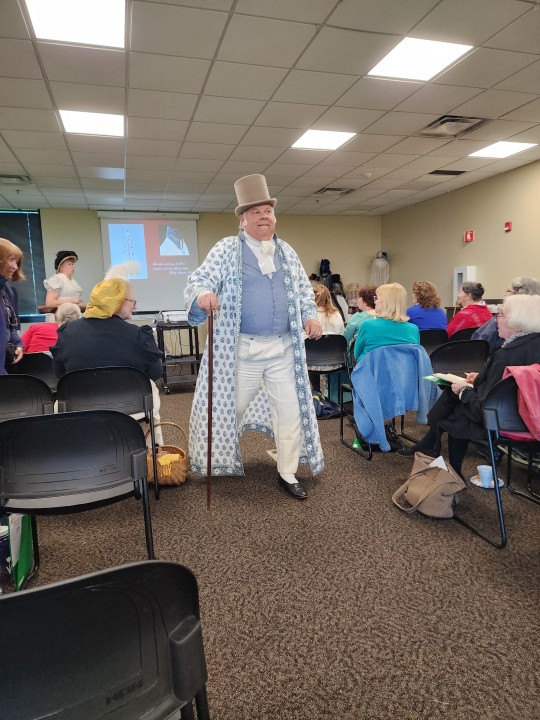
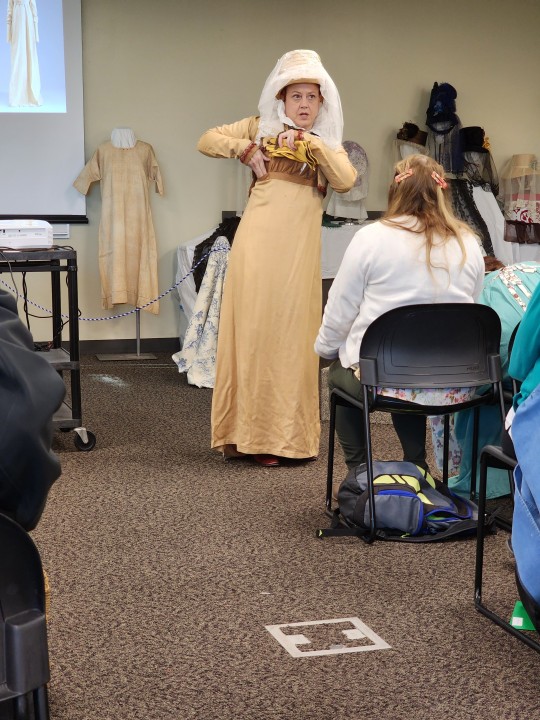


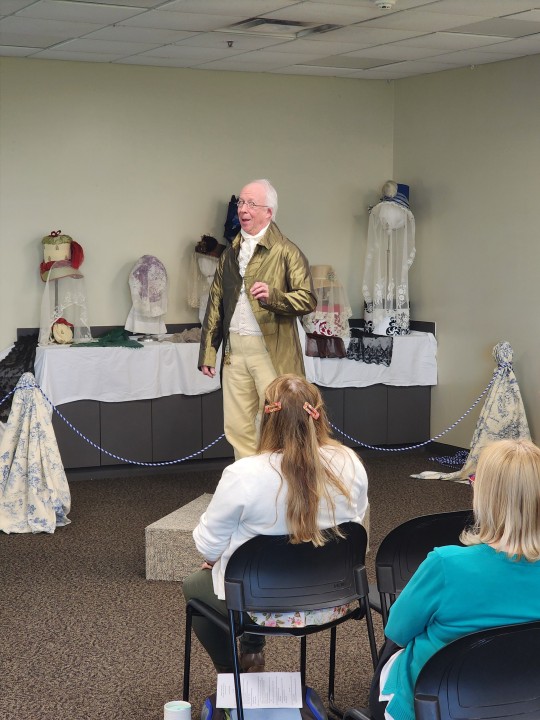
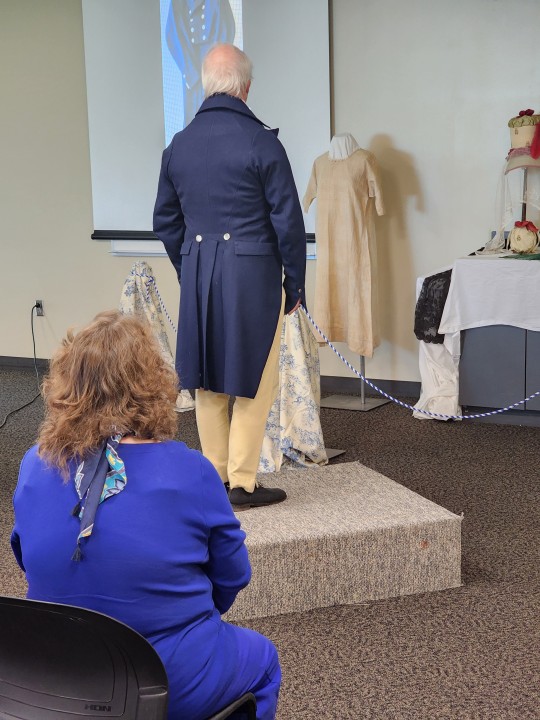
I enjoyed the lectures and gathered some nice references. But I didn't go to the evening soirée event because I was too busy with other things.
The "beginner" fibre arts classes were above my level tbh; everyone was very friendly and nice but they were also Level 9000 Sewing Wizards and I felt out of place.
25 notes
·
View notes
Text
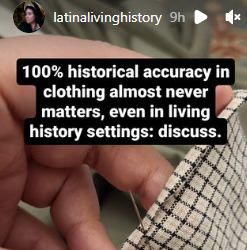
I have a lot of opinions on this but I would love to know what other people think.
#sewing#living history#historical costuming#history#historical reenactment#historical accuracy#historically accurate#historically adequate#historical sewing#museums#material culture#experimental archaeology
326 notes
·
View notes
Text

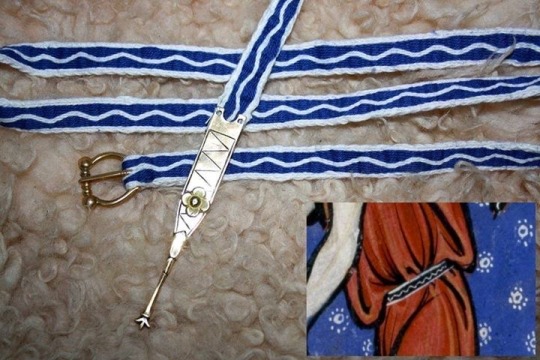
13th century tablet woven belt
#15th century#13th century#medieval#tablet weaving#loom weaving#belt#christianity#reenactment#living history#medieval clothing#reenactor#manuscript
197 notes
·
View notes
Text

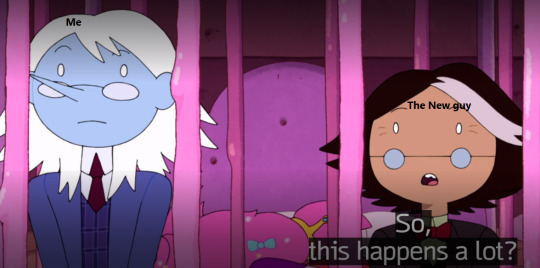

Heh, museum work.
#history#museum#history museum#living history#museam#museum work#historical interpreter#historian#historical reenactment#living history museum#living history meme#meme#museum professional#simon petrikov#the winter king#fiona and cake#academia
144 notes
·
View notes
Note
How did you get into living history as a profession?
In eighth grade, on my big school field trip, we visited my current museum. At the time I didn't think about it as a job, I just wanted to live here. Which I now literally do: I live in one of the reconstructed buildings inside the historic town.
The same year, my history teacher was very good, and structured his class in ways that worked for me very well. For one thing, he'd tell the anecdotal, often amusing parts of history, not just pure dates and names. And more importantly, he had couches in the back of the classroom arranged in a circle, where after reading the chapter we were on the whole class would go back there and talk about it. I am a very auditory person, so this helped me tremendously. It also, not so coincidentally, is very similar to how this field works. The term for the work I do, internally, is called "historic interpretation". I try not to use that term with guests unless I can explain it, but basically, if you can imagine what a language interpreter does - that is, turning a foreign language into something a person can understand - that's what we do with history. Help people better understand it, who may not otherwise know much about it. There's a lot more to it, and for anyone interested in the field, I highly recommend the seminal work on interpretation (not just historic, but also nature, science etc.): Freeman Tilden's Interpreting Our Heritage. He had been contracted by the National Parks service for decades to observe how park service guides interacted with guests, and from that develop an understanding of what works and what doesn't, and did a lot of training for the parks. This book was the culmination of all that, where he breaks interpretation down to his six primary principles, to each of which he devotes a chapter explaining them in depth. There are updated works which expand on it, but part of why his work still stands up (and is, in my opinion, still far better than any of the others) despite being published in the 1950s is that he really gets down to the basic core of what interpretation is and can be. I am not ashamed to say I literally cried the first time I read it, because it exemplifies why I care so deeply about the work that I do. To quote what is, in my opinion, the most important and core of his principles, he writes that: "Interpretation is not information, but provocation." That is to say, all interpretation is based on information, but the goal is not to come away with every guest interaction having shared so many facts, but rather to have inspired them to be interesting in the subject more deeply and want to learn more. This is what happened to me, all those years ago.
Between that class and that field trip, it made me realize I loved history. In hindsight I now realize I already did - I loved Jane Austen film adaptations, for example, and was already beginning my obsession with servants - I just didn't like or connect with the way it had been taught to me up until that point. And again, interpretation as an idea in and of itself, beyond just the things being shared, also became something I was enamoured with.
About 12 years later, I was working at a restaurant which was destroying my mental and physical health, and I knew I needed a change. I also desperately needed to get away from my home town. I thought about the things I liked (history), was good at (talking to people), and wanted to do (wear period clothing -- and again, get away), so I thought maybe I could work at a historic museum. Long story short, I began applying to various places, including my current museum. Eventually, I ended up working at a seasonal site in Michigan, where I spent four 'summers' (for the last three, I was there from beginning of May until end of October), and with that experience was able to get my first full time job at my current place. Which I eventually left to go to another museum, only to come back about a year and a half later.
..... as an aside, and I like to tell this story especially for anyone aspiring to get into this field, or really in general, my first boss once told me why she gave me an interview. My restaurant job was my only job ever, and while by that point I had my GED, I was a highschool dropout and have never been to college. I've worked with hundreds of colleagues since, and not counting people still in school, I think I can count on one hand the people that do interpretation specifically who are not college graduates (not to mention many with Masters and PHDs etc), let alone have never gone at all like me.
In my cover letter for that first job, I made an analogy. My job at the restaurant was running the salad bar, and because it was in the middle of the dining room, I said something along the lines that it meant I was "always on display", so that would help me in being in such a visible job in period clothing etc. and always having to be 'on' for guests. Because analogies, and connecting to things people understand to help them better grasp the information being shared, are such a huge part of the job, she, in her own words, "knew she needed to give me an interview." And because I am, in fact, good at talking, I knocked it out of the park.
..... which is not to say I didn't have a lot to learn when I started, it was truly a struggle at first on a lot of levels, but these days I think I am an excellent interpreter. And considering I have very low self-esteem overall, it's one of the only things about myself that I'll say that about.
88 notes
·
View notes
Text
Some tablet weaving I've done recently!

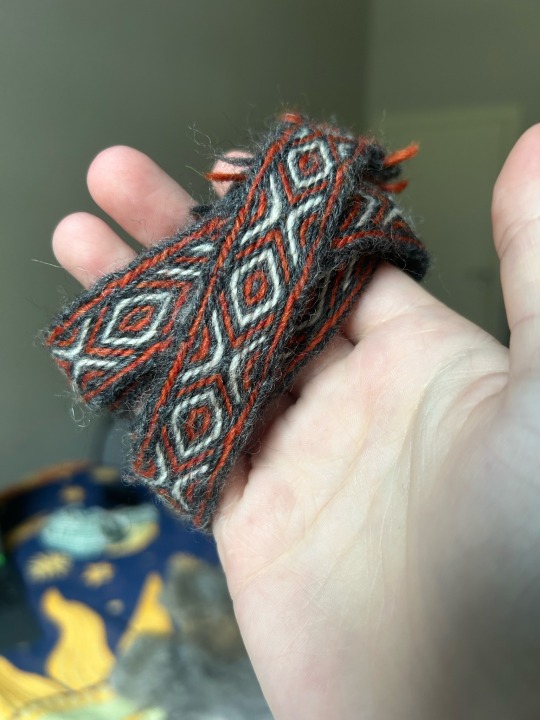

102 notes
·
View notes
Text
Adventures in Plant Dyeing: Part 6 - Tansy
During the spring break I decided to do some more plant dyeing, this time with tansy. Tansy is a yellow flower that was traditionally used for medicinal purposes. It's meant to yield bright yellows on its own, and olive green with iron.

I used 50g of dried tansy to dye 250g of wool fibre, which ended up not being a great idea as the dye wasn't very concentrated and all my colours were quite pale. I could have partially solved this by putting some of the skeins in first to obtain a more vibrant shade, then putting the rest after a few minutes to get a paler colour, but I was unreasonably optimistic and hoped I'd get some bright colours anyway.
I used 3 50g skeins of white pure wool, one of which was my handspun, and 1 100g skein.

I mordanted all the skeins with alum for 45 minutes while I soaked the dried tansy in hot water to extract the dye. The dyebath turned a rich, dark brown.
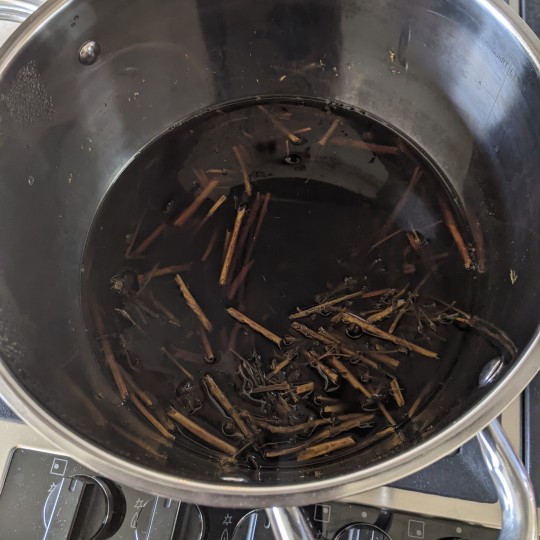
Then I strained the dye bath and split it into 2 pots, adding calcium carbonate to one. I put 3 skeins in the original bath and one in the bath with the calcium carbonate. I heated them for half an hour, making sure they didn't boil, and left them to cool for 15 minutes. The skein in the bath with the calcium carbonate turned a pretty shade of lemon yellow, while the others were a slightly more mustard colour.
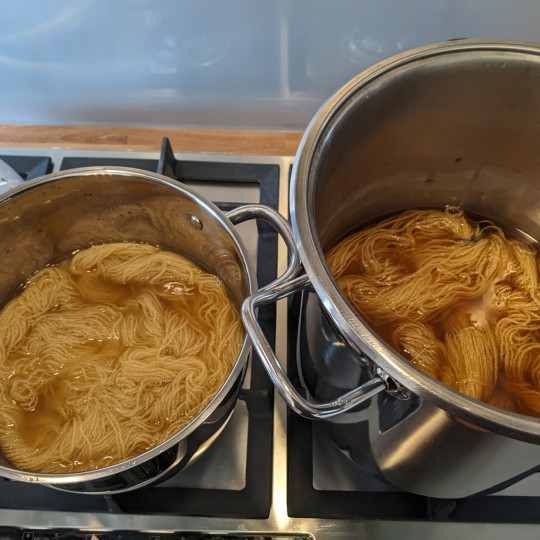
I then rinsed all the skeins before preparing one afterbath of citric acid and one of ferrous sulphate (iron), to use as colour modifiers. I did this by adding roughly a teaspoon of the modifier to a few inches of hot water, then adding the yarn and heating gently for 15 minutes until they had changed colour.
The iron did indeed turn the pale yellow into a pale green as expected, however the citric acid, which is meant to produce cooler yellows, only succeeded in lightening the already-pale yarn, leaving me with a beige yarn barely more pigmented than the white I started off with.
Here are the yarns after drying:

From left to right: Citric acid, calcium carbonate, no modifier, ferrous sulphate
On the whole I'm pretty happy with the results given how little dyestuff I used, but I would definitely try this again with a much higher dye-to-fibre ratio. I think I'll leave the beige skein in my dyeing basket to be redyed next time...
30 notes
·
View notes
Text

Baby's first embroidery, with the help of DMC Magic Paper because I can't freehand draw for shit. This is on a triangle collar which I have gifted to the curator of the living history museum where I volunteer/make costumes for. Done on cotton voile.
#embroidery#historical costuming#historical costumes#living history#collars#needlework#ancient craft
67 notes
·
View notes
Text
Finally got around to taking a class on "Viking" wire weaving, a technique used during the Viking Age to make long flexible braids of wire, which they used as adornment. Basically it's like using a knitting noddy, only backwards and with wire. The final effect is achieved by drawing it through successively smaller holes in a wooden draw plate, which compacts and elongates the braid.
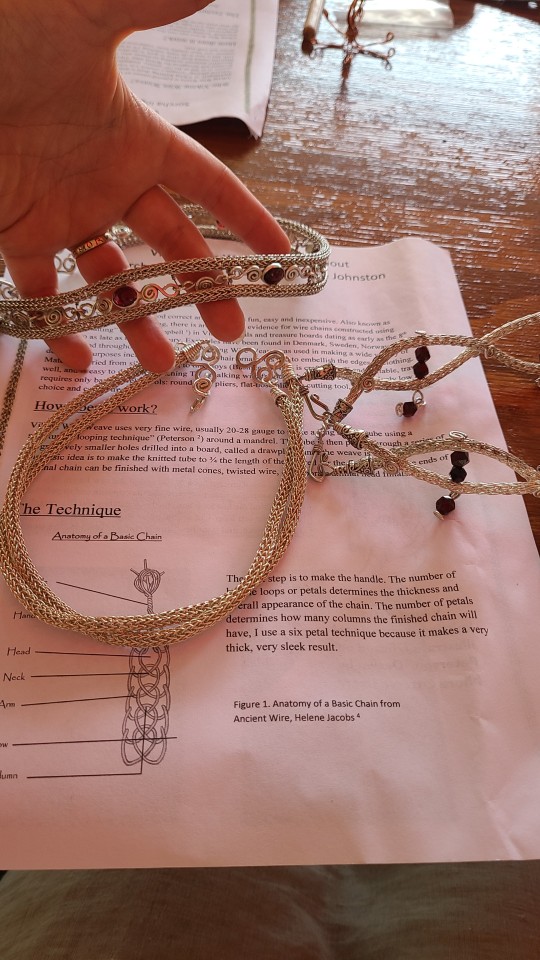

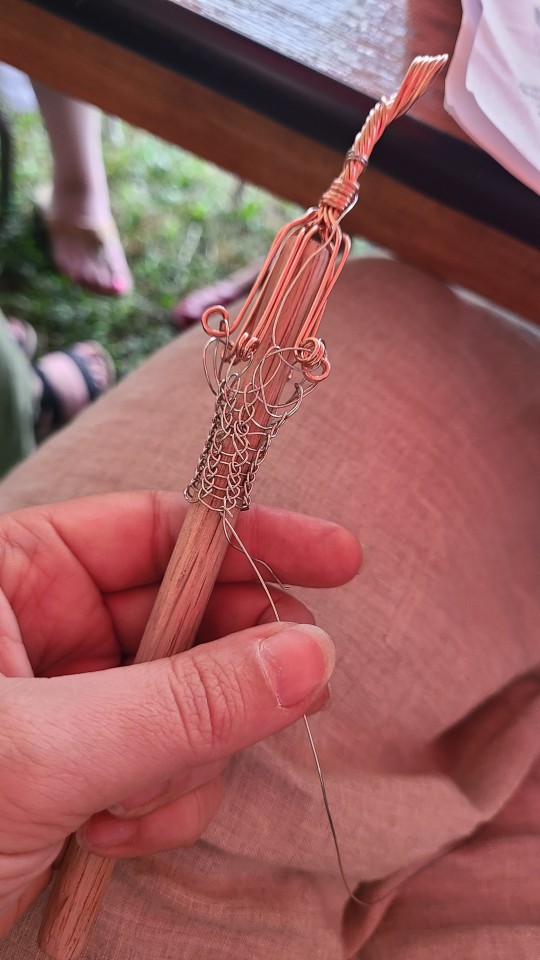
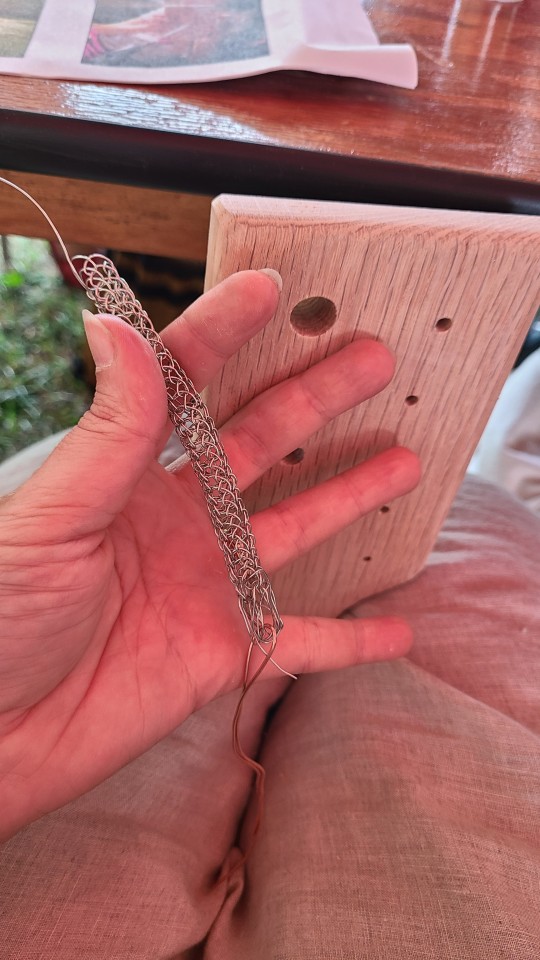

Excited at the prospect of incorporating this into my jewelry and product line.
584 notes
·
View notes
Text
youtube
Indigenous Weapons and Tactics of King Philip's War
from Atun-Shei Films
125 notes
·
View notes
Text

Local sachem of the Weckquaesgeek and an English merchant in 1657 Massachusetts cannot BELIEVE this man is stealing their wi-fi without even asking!!!
#causes that unite diverse cultures#17th century#living history#fashion history#the englishman needs more bombast in his britches
123 notes
·
View notes
Text
this is your semi-regular reminder, especially now that people are going on vacation and may find themselves somewhere like disney or a living history site or any sort of attraction where you may encounter an employee in a costume:
If You Wouldn't Touch Someone You Just Met In A Certain Way, Don't Touch An Employee In A Costume That Way Either
i don't mind when im offered a handshake or a little kid hugs me at the end of a tour. hell, i don't even mind if your bachelorette party asks if i want to join a group hug for a photo.
but im a person! the tinkerbell you see at disney is a person! the milliner at colonial williamsburg is a person! my coworker portraying an enslaved woman is a person! the clothes we are wearing are our work outfits, our bodies are our bodies. you do not get to treat us differently because of the photo op you want, or because you caught a glimpse of historical undergarments that intrigues you, or because you think that we, as workers, cannot say no to you without getting in trouble.
Treat Everyone You Encounter As A Person, And Don't Touch My Fucking Stomach
#messages from the ouija board#sadies day job#living history#i just hate that i have to give safety tips and reassurances to new coworkers about how to handle these things#i recently mentioned it offhand to some people from maintenence and they were horrified and i was like oh yeah thats not a normal issue#one of our shift managers who is black also just gave her own talk to a new black employee about dealing w harassment from guests#and it just makes me so mad the way tourists behave sometimes
99 notes
·
View notes
Text
youtube
Viking Food and Cooking : Apple Fritter Rings (Æbleskiver)
from Ravens of History
69 notes
·
View notes
Text

And to that, I hold. I would rather share one lifetime with you than face all the ages of this world alone.
(Original photo from medieval festival in Belgrade, Serbia - ig: @sarcasmaddict_ @_witch_king_of_angmar )
#15th century#living history#medieval#reenactment#reenactor#medieval clothing#medieval knight#fantasy#photoshoot#photo edit#princesscore#medieval fashion#medievil#medien#poppy and casteel#medieval painting#medieval period#medieval poetry#medieval peasant#medieval dress#tailoring#sewing#embroidery#fabric#instatumblr#instalike#instagram#aesthetic#lord of the rings
117 notes
·
View notes
Text
Behind every great museum is a disheveled historian who can't sustain a normal conversation for more than 5 minutes eating pizza at their computer desk at 2 in the morning blasting Nightcore remixes in their headphones because they have too many projects and all of them are nearing their deadline for completion
#history#museum#history museum#museam#living history#museum work#historical interpreter#historian#historical reenactment#living history museum#museum professional
81 notes
·
View notes
